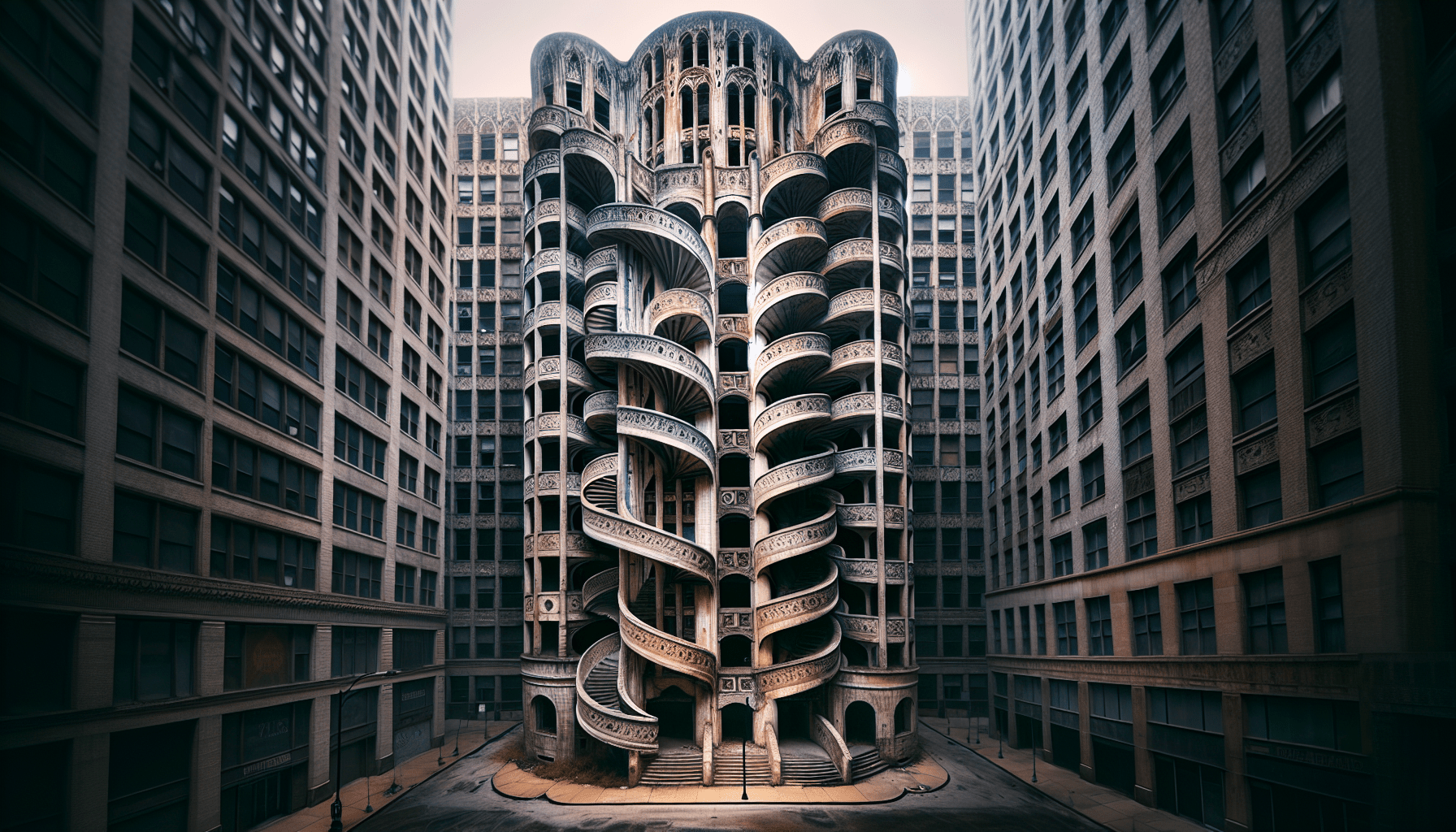Imagine walking through the bustling streets of Chicago, marveling at the architectural wonders that surround you. Your eyes fix on a unique building, its graceful spiral shape drawing you closer. But wait, something seems off. The once vibrant building now stands abandoned, a silent sentinel amidst the bustling city. What happened to this captivating structure that once held so much promise? In this article, we will uncover the intriguing story behind the mysterious fate of the Spiral Building in Chicago. Prepare to be captivated by the secrets that lie within its walls.
History of the Spiral Building
Construction of the Spiral Building
The history of the Spiral Building in Chicago dates back to the early 20th century. It was designed by the renowned architect John M. Van Osdel and constructed between 1924 and 1925. This impressive structure was built as a commercial office space and quickly became an iconic symbol of the city’s architectural prowess.
Unique Design and Features
The Spiral Building boasted a truly unique design, unlike any other building in Chicago at the time. True to its name, the building featured a spiral shape, with each floor twisting slightly as it rose upwards. This innovative design allowed for optimum natural light and stunning views of the cityscape.
Apart from its distinctive form, the Spiral Building incorporated several other notable features. The exterior walls were adorned with intricate geometric patterns, showcasing the talents of skilled craftsmen. Inside, the building featured spacious atriums, grand staircases, and state-of-the-art facilities, which contributed to its overall charm and functionality.
Recognition and Fame
From the moment of its completion, the Spiral Building captured the imaginations of both locals and visitors alike. Its captivating design and striking presence earned it recognition as a significant architectural achievement. The building’s fame spread beyond Chicago, and it soon became a symbol of the city’s architectural ingenuity, drawing attention from around the world.
Decline and Abandonment
Neglect and Deterioration
Despite the Spiral Building’s initial success and acclaim, the passage of time took its toll on the iconic structure. Over the years, as newer buildings emerged in the city, the Spiral Building gradually lost its allure. Neglect and inadequate maintenance led to the deterioration of its once-grand façade. The beautiful geometric patterns on its walls faded, and the building’s overall condition became a cause for concern.
Attempts at Restoration
Recognizing the historical and architectural significance of the Spiral Building, several organizations embarked on restoration initiatives. Efforts were made to secure funding and collaborate with preservation experts to restore the building to its former glory. However, due to the immense complexity and scale of the project, these attempts faced numerous challenges and were unable to fully revive the building’s original splendor.
Public Interest and Support
The plight of the Spiral Building sparked a wave of public interest and support. Local communities, architectural enthusiasts, and concerned citizens rallied behind the cause of preserving this architectural gem. Public awareness campaigns, fundraisers, and activism efforts aimed to raise the necessary funds and garner wider support for the restoration of the beloved building.
Demolition and Controversy
Decision to Demolish
Despite the sincere efforts to save the Spiral Building, its deteriorating condition eventually led to a difficult decision – to demolish the structure. The decision was met with mixed emotions and widespread controversy. While some argued that demolition was the only viable option, others fervently opposed the idea, fighting for the building’s preservation as an integral part of Chicago’s architectural heritage.
Protests and Opposition
As news of the demolition plan spread, passionate protests and opposition swelled within the community. Activists staged rallies, organized public meetings, and appealed to local authorities in an attempt to halt the destructive course. Campaigns advocating for alternative solutions, such as adaptive reuse or partial demolition, gained traction, highlighting the desire to find a compromise that would honor the building’s historical legacy.
Impact on the Community
The demolition of the Spiral Building had a profound impact on the community. For many, it represented the loss of a cherished landmark and a piece of the city’s identity. The event sparked debates about preserving architectural heritage and the balance between progress and conservation. It served as a valuable lesson, prompting discussions and policies regarding the protection of historically significant sites in Chicago and beyond.
Legacy and Memorabilia
Preservation Efforts
Although the Spiral Building may no longer grace the Chicago skyline, its legacy lives on through preservation efforts and commemorative initiatives. The lessons learned from its story have led to increased appreciation and support for architectural preservation in the city. Preservation organizations continue to work tirelessly to safeguard other notable buildings, ensuring that future generations can appreciate and learn from architectural wonders of the past.
Mementos and Collectibles
As memories of the Spiral Building persist, enthusiasts and collectors seek out mementos and collectibles associated with the iconic structure. Architectural drawings, vintage photographs, and artifacts from the building have become highly sought-after items, with auctions and specialized stores catering to the demand. These tangible pieces serve as reminders of the building’s grandeur and the impact it had on the city.
Significance in Architectural History
Though the Spiral Building is no longer physically present, it remains an essential chapter in Chicago’s architectural history. Its innovative design and cultural impact continue to be studied and celebrated. Architects, historians, and enthusiasts recognize its influence on subsequent architectural developments and its significance in shaping the city’s built environment. The Spiral Building leaves an indelible mark on the architectural landscape of Chicago, serving as a testament to the city’s rich and diverse architectural heritage.
In conclusion, the Spiral Building in Chicago had a remarkable journey, from its construction as a groundbreaking architectural marvel to its unfortunate decline and eventual demolition. Despite its physical absence, its legacy endures through preservation efforts, collectibles, and its lasting impact on the architectural history of the city. The Spiral Building serves as a reminder of the fragility of historic structures and the importance of valuing and protecting our architectural heritage for future generations.
